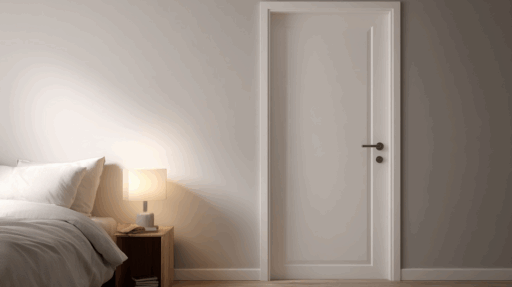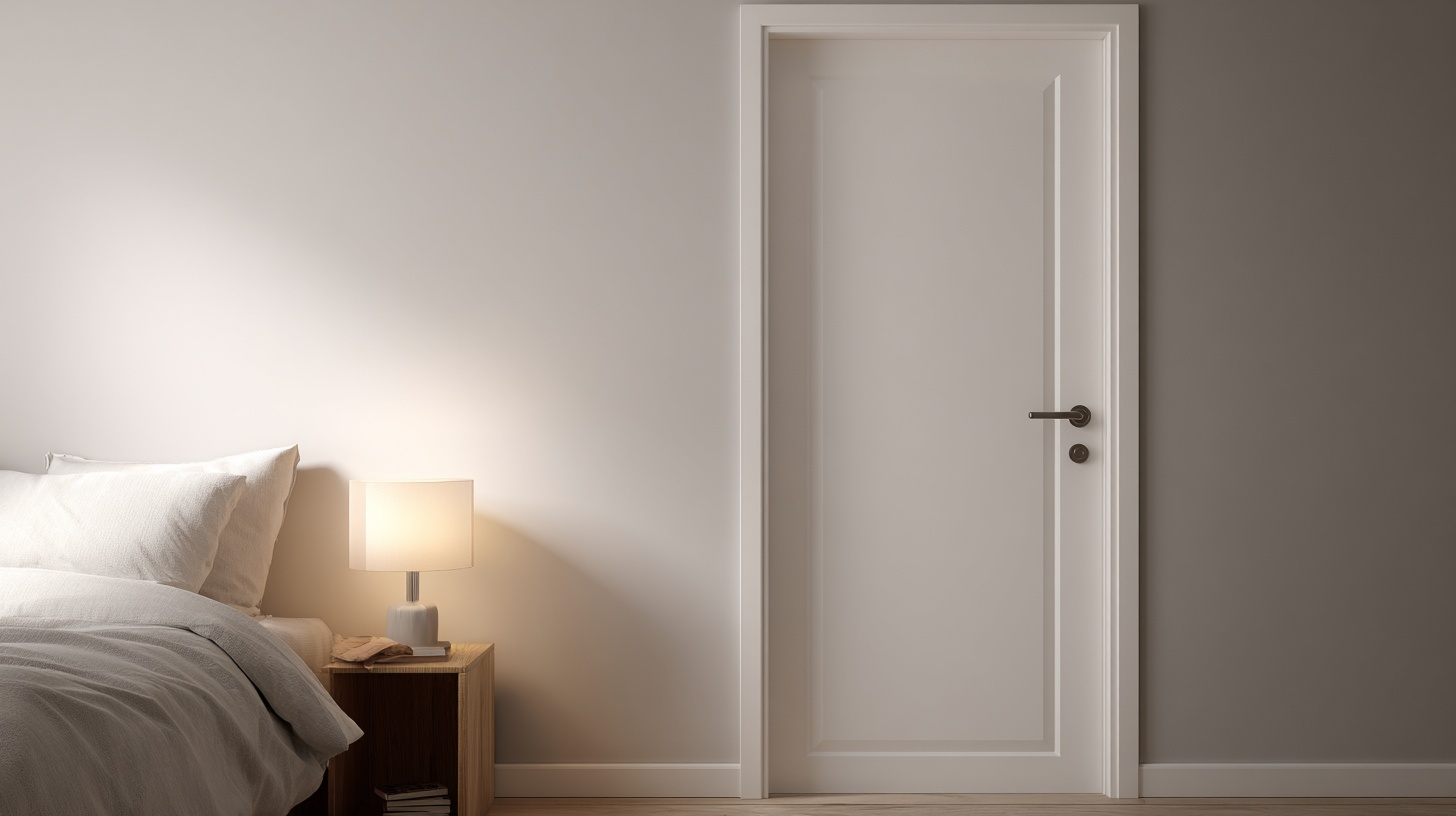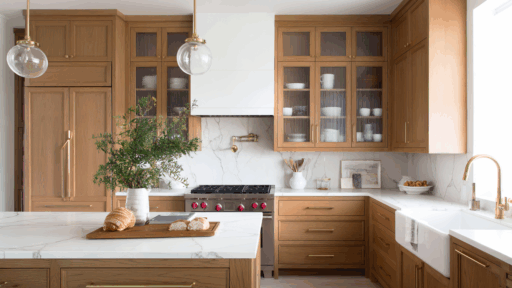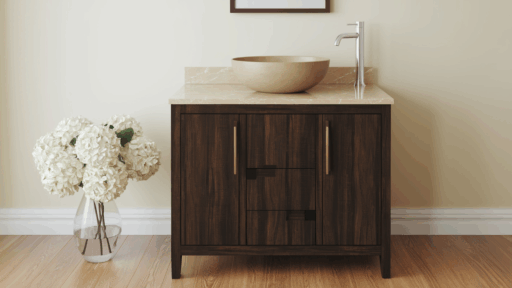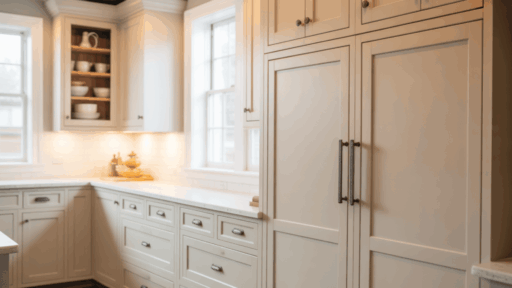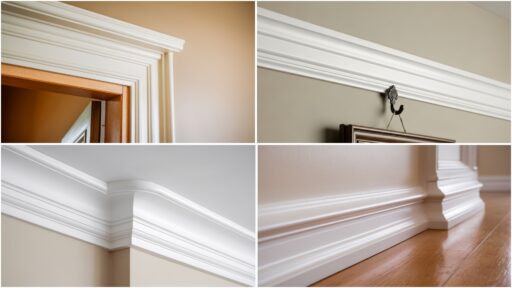Doors. We open them, close them, and sometimes slam them when we’re mad. But have you ever stopped to think about all the different types of interior doors hanging around your house?
I mean, there’s more variety than flavors at an ice cream shop! And its important to know which ones are the best interior doors for your house.
From the classic swing door that hits you in the face when you’re not paying attention, to sliding doors that make you feel like you’re on a spaceship.
Let me walk you through the door world, and trust me, it’s way more interesting than you’d think.
How to Decide on the Perfect Door for Your Interiors
Choosing the best interior doors isn’t rocket science, but it’s not exactly as easy as picking socks. Your home has personality, and your doors should match that vibe.
Think about your space first. Got a tiny hallway? Skip the wide-swinging doors. Living in a noisy house? Sound-blocking doors are your friend. Budget tight? There are plenty of wallet-friendly options that still look great.
Consider these key factors:
- Room function: Bedrooms need privacy, kitchens need easy access
- Available space: Measure twice, order once
- Style preference: Modern, traditional, or somewhere in between
- Budget range: Doors can cost anywhere from $50 to $500+
- Maintenance level: Some materials need more care than others
The perfect types of interior doors balance all these elements without breaking your bank or your design vision.
Types of Interior Doors That You Cannot Miss
Ready to meet the door family? Each type of interior door has its own distinct personality and purpose. Some are show-offs, others are workhorses.
Here’s your complete guide to interior door varieties.
1. Panel Doors
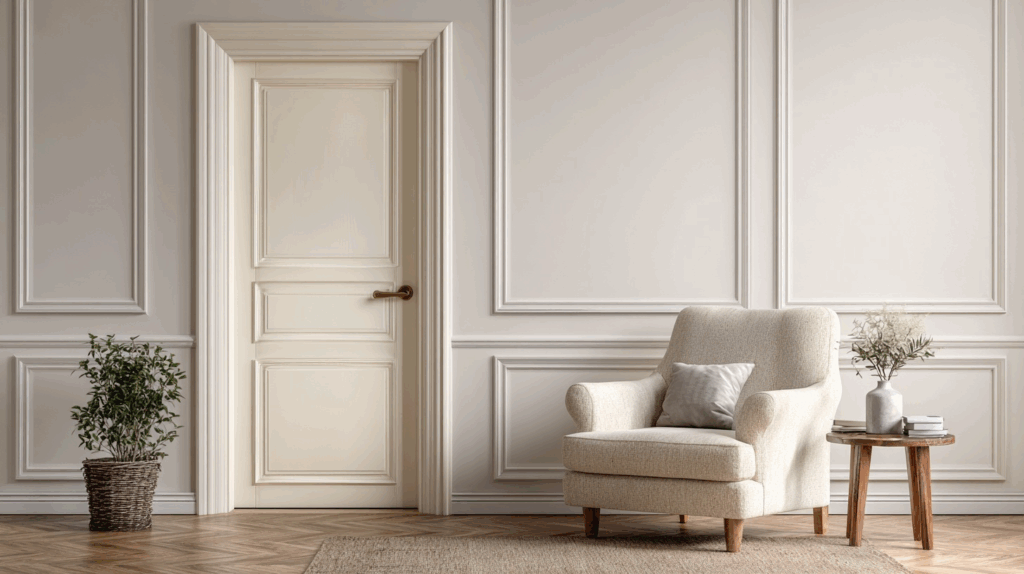
The classic choice that never goes out of style. Panel doors feature raised or flat rectangular sections separated by rails and stiles.
They bring traditional charm to any space and work well in both formal and casual settings. These doors offer solid construction and timeless appeal.
- Why it works: Versatile design fits most home styles
- Budget: $80-$200 per door
- Tip: Choose flat panels for a modern look, raised panels for a traditional feel
2. Flush Doors
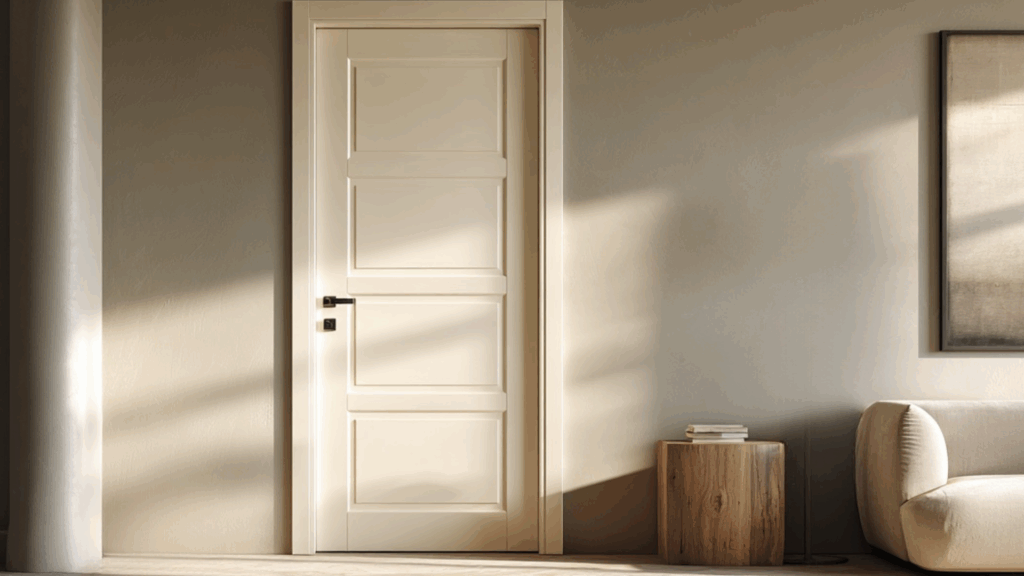
Simple, smooth, and streamlined. Flush doors have completely flat surfaces with no raised panels or decorative elements.
These types of interior doors are the minimalist’s dream door, offering clean lines that complement contemporary interiors. Perfect for homes that prefer understated style over ornate details.
- Why it works: Clean appearance suits modern and minimalist designs
- Budget: $50-$120 per door
- Tip: Add interest with bold paint colors or hardware
3. French Doors
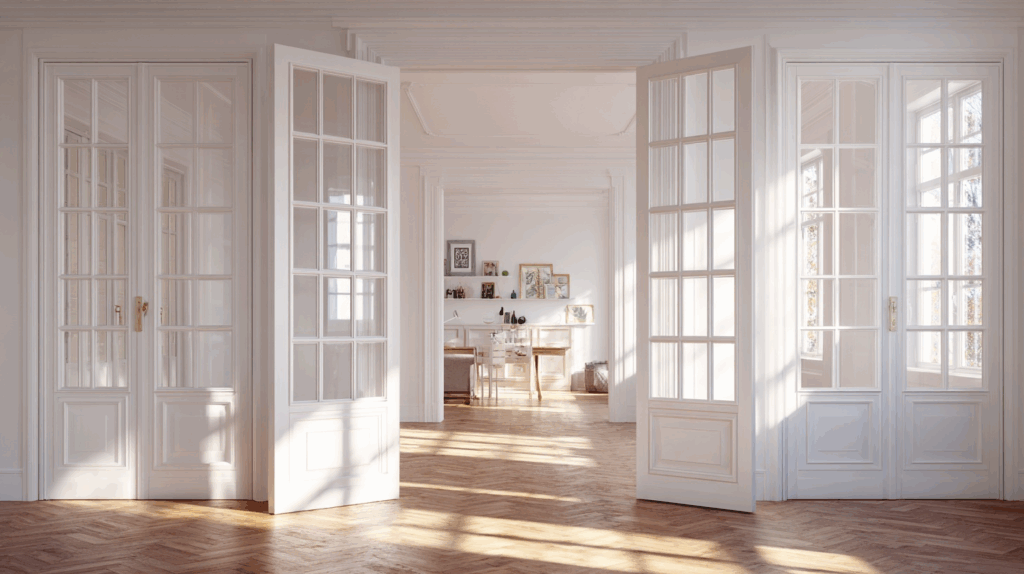
Double doors with glass panels that bring European flair to your home. French doors typically feature multiple glass panes held by wooden or metal grids.
They create an open, airy feel while maintaining a sense of separation between rooms. Popular for dining rooms, offices, and master bedrooms.
- Why it works: Maximizes light flow between connected spaces
- Budget: $300-$800 per pair
- Tip: Use frosted glass for privacy without losing light
4. Sliding Doors
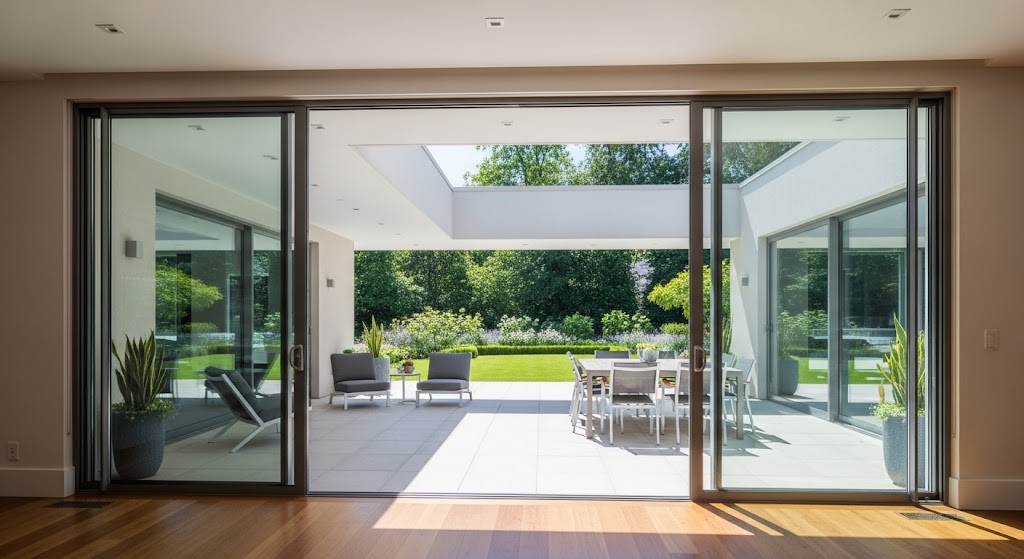
Space-savers that glide along tracks instead of swinging open. Sliding doors are perfect for tight spaces where traditional doors would bump into furniture.
They come in various materials and styles, ranging from rustic barn doors to sleek modern panels. Great for closets, pantries, and room dividers.
- Why it works: Saves floor space in cramped areas
- Budget: $150-$400 per door
- Tip: Install soft-close mechanisms to prevent slamming
5. Pocket Doors
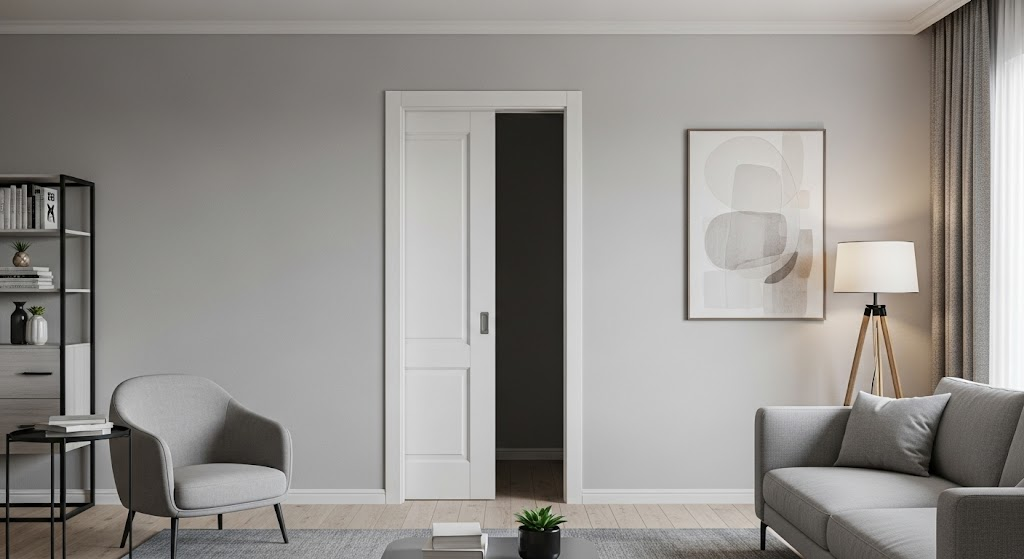
Pocket doors slide completely out of sight, making them ideal for small bathrooms, closets, or any space where space is premium.
These types of interior doors require special framing during construction but offer unmatched space.
- Why it works: Completely disappears when open, maximizing space
- Budget: $200-$500 per door (including installation)
- Tip: Plan electrical and plumbing around pocket door frames
6. Barn Doors
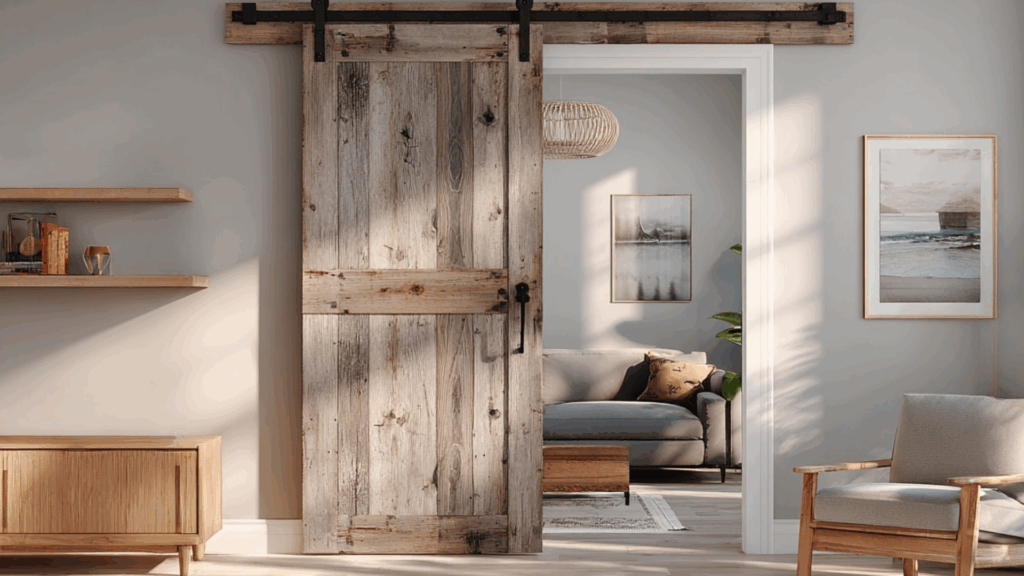
Rustic charm meets practical function. Barn doors hang from exposed tracks and slide across wall surfaces.
They add character to any room with their farmhouse appeal, working especially well in homes with industrial or country-style decor. Popular for bedrooms, bathrooms, and pantries.
- Why it works: Adds rustic character while saving swing space
- Budget: $200-$600 per door
- Tip: Give the wall a chance to support the door’s weight and hardware
7. Bifold Doors
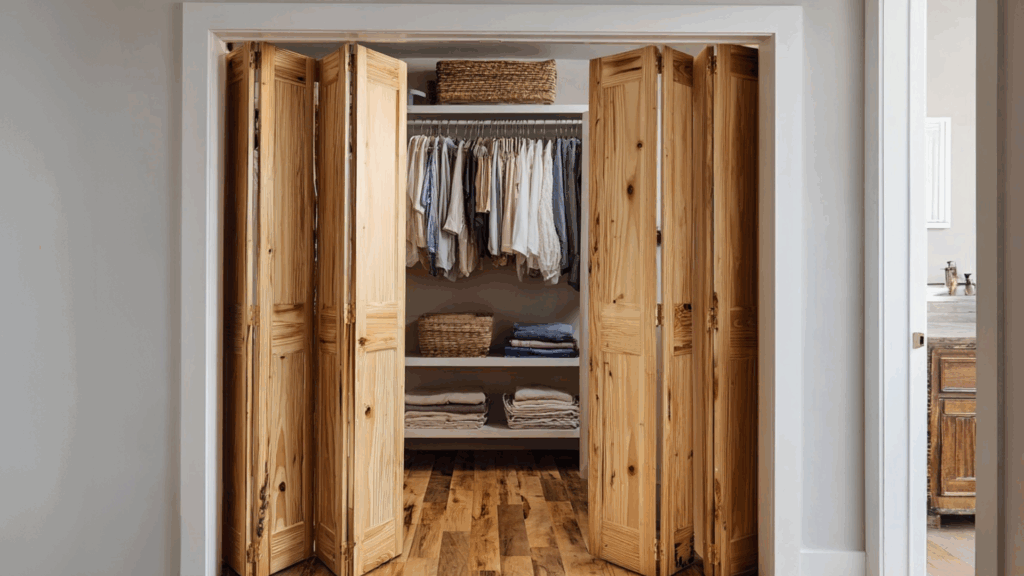
Two-panel doors that fold in half when opening. Bifold doors are closet classics but work well for other applications too.
They provide full access to openings while taking up minimal space when open. Available in various materials from basic hollow-core to solid wood.
- Why it works: Provides wide openings without requiring much clearance
- Budget: $100-$300 per door
- Tip: Adjust tracks regularly to prevent binding
8. Glass Doors
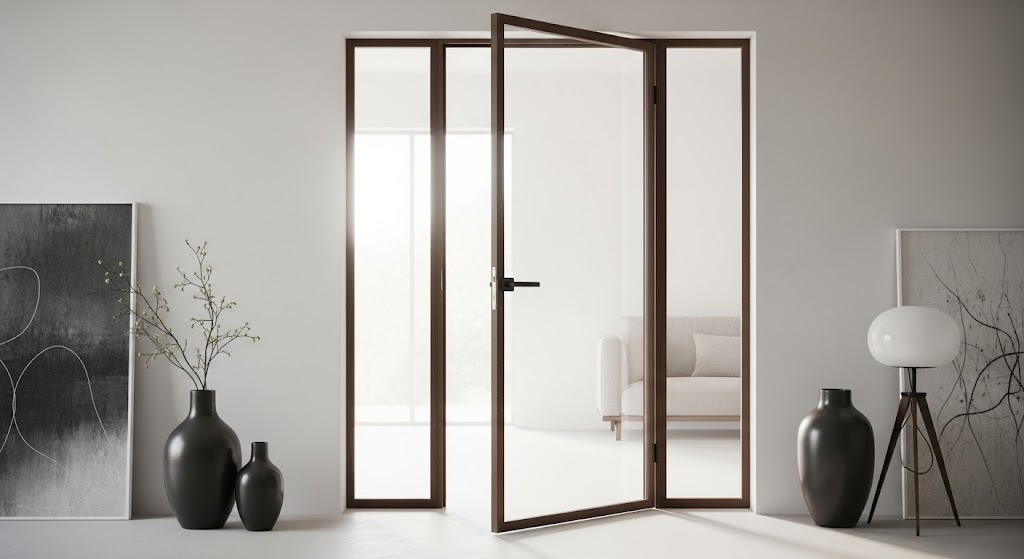
Transparent or translucent doors that maintain visual connection between spaces. Glass doors can be clear, frosted, textured, or colored to suit different privacy needs.
They’re perfect for home offices, dining rooms, or anywhere you want light without losing room definition.
- Why it works: Maintains sight lines while creating separation
- Budget: $250-$600 per door
- Tip: Choose tempered glass for safety in high-traffic areas
9. Louvered Doors
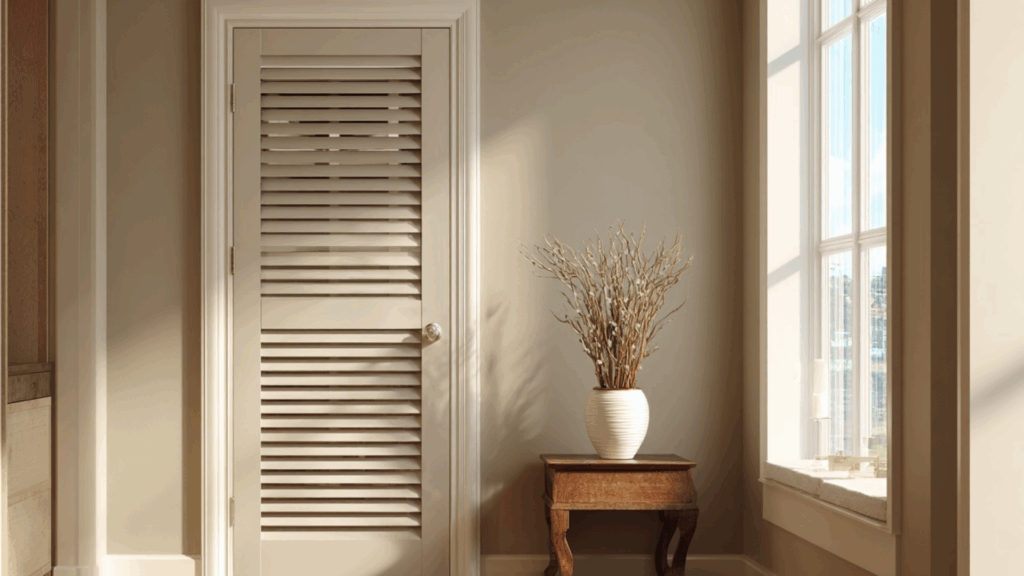
Doors with horizontal slats that allow air circulation while providing privacy. Louvered doors are ideal for closets, laundry rooms, and utility spaces where ventilation is crucial.
They come in various slab sizes and can be painted or stained to match your decor.
- Why it works: Promotes air circulation in closed spaces
- Budget: $120-$250 per door
- Tip: Regular dusting keeps slats looking fresh
10. Solid Wood Doors
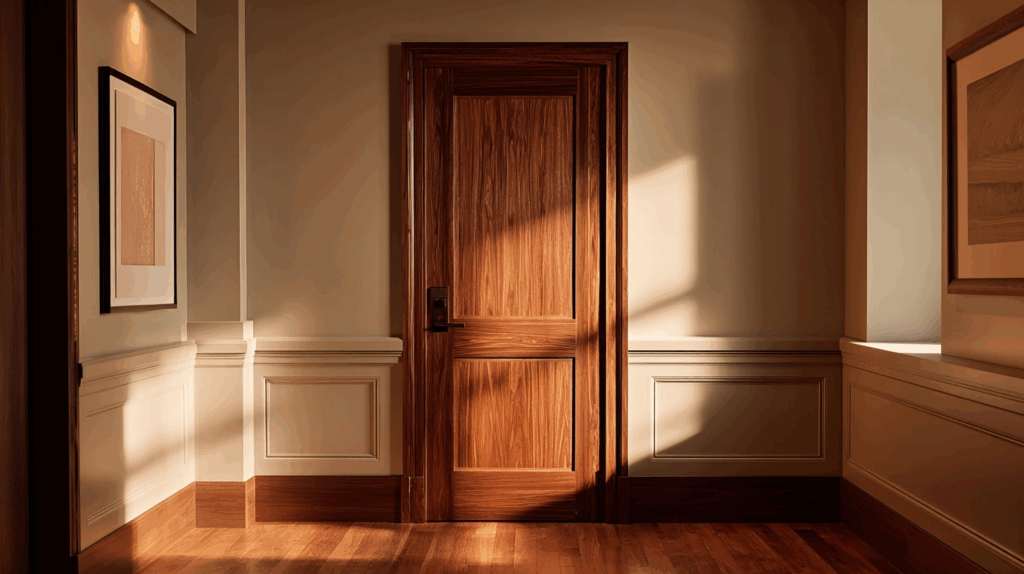
Heavy-duty doors are made from a single wood species or glued-up planks. Solid wood doors offer superior sound blocking, durability, and natural beauty.
They can be painted or stained and typically last for decades with proper care. The premium choice for quality-conscious homeowners.
- Why it works: Superior durability and sound insulation
- Budget: $300-$800 per door
- Tip: Seal all surfaces to prevent warping from moisture
11. Hollow Core Doors
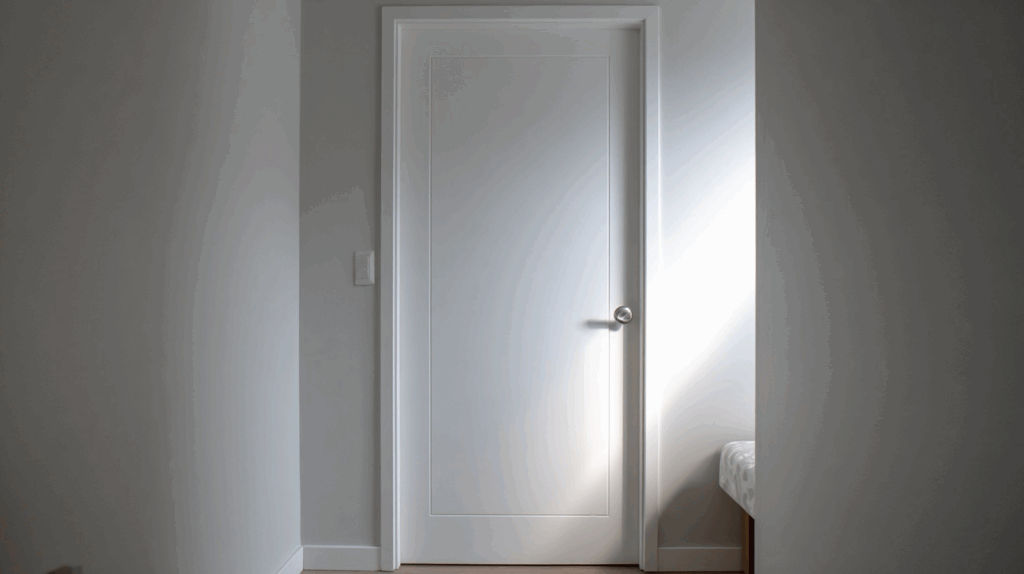
Lightweight doors with honeycomb or hollow interiors covered by thin wood veneers. Hollow core doors are budget-friendly options that work well for low-traffic areas.
They’re easy to install and replace, but offer minimal sound blocking compared to solid alternatives.
- Why it works: Affordable option for basic door needs
- Budget: $40-$100 per door
- Tip: Handle gently – they dent easily but are simple to replace
12. Solid Core Doors
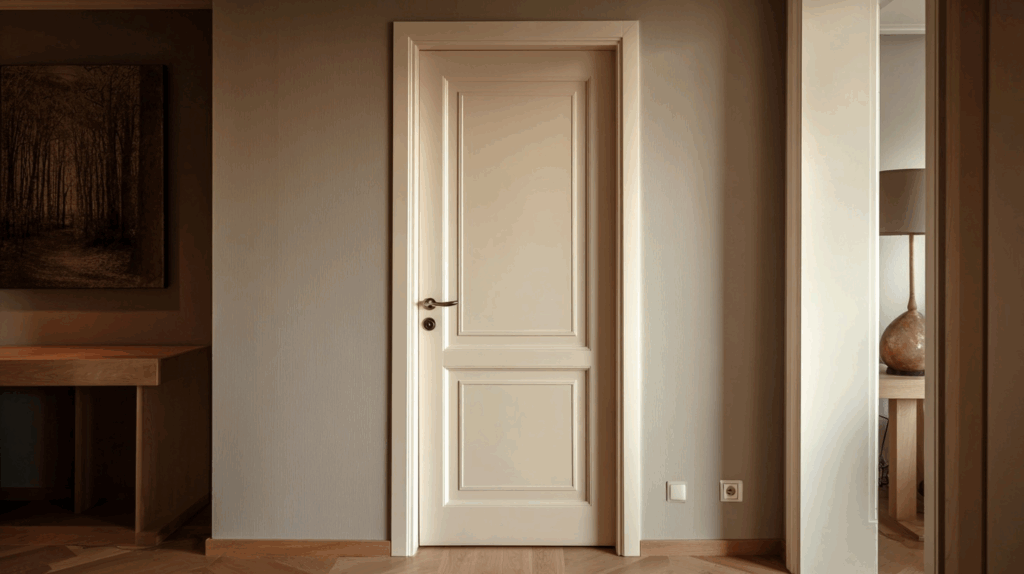
Middle-ground option with solid material cores covered by wood veneers. Solid core doors provide better sound insulation than hollow core while remaining more affordable than solid wood.
They offer good durability and can be painted or stained like solid wood doors.
- Why it works: Balances cost with performance and sound blocking
- Budget: $150-$300 per door
- Tip: Choose molded versions for consistent grain patterns
13. Dutch Doors
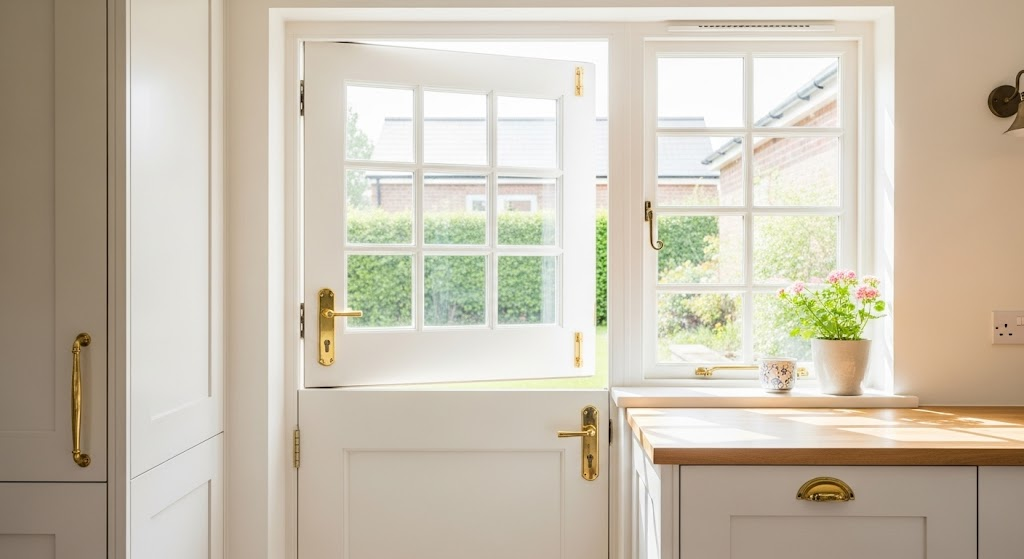
These types of interior doors are split horizontally in the middle, allowing the top and bottom halves to operate independently of each other. Dutch doors bring old-world charm and practical ventilation options.
Open the top for air flow while keeping pets or children contained below. Popular for kitchens, nurseries, and country-style homes.
- Why it works: Offers partial access and ventilation control
- Budget: $400-$700 per door
- Tip: Install quality hardware to make both halves align properly
14. Double Doors

Two doors that work together to create wide openings. Double doors make grand entrances and suit formal spaces, such as dining rooms or master bedrooms.
They can be identical panels or feature complementary designs. Often used where single doors would be too narrow for the opening.
- Why it works: Creates impressive openings for formal spaces
- Budget: $400-$1000 per pair
- Tip: Install astragal strips between doors for better sealing
15. Accordion Doors
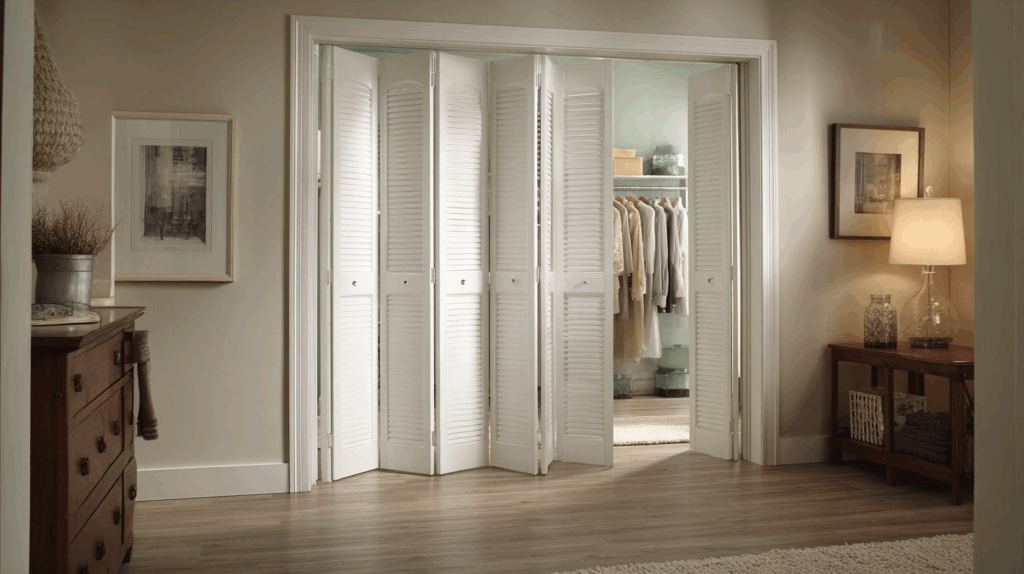
Multi-panel doors that fold like accordions when opening. Accordion doors are ideal for room dividers, large closets, or any area where you need to close off significant openings occasionally.
They come in various materials from vinyl to wood, and can span wide openings economically.
- Why it works: Covers wide openings while folding compactly
- Budget: $200-$500 per door
- Tip: Choose quality tracks for smooth operation
16. Saloon Doors
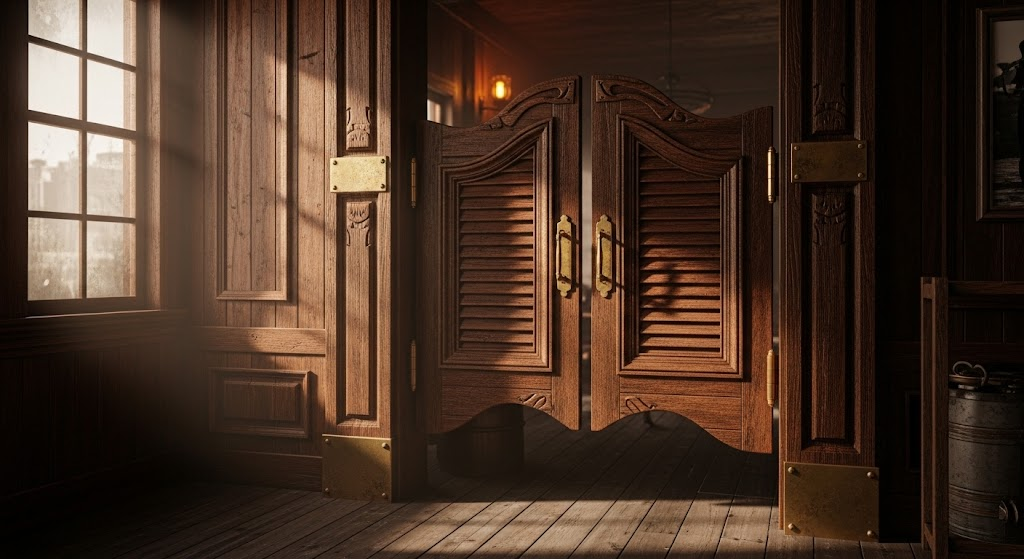
Half-height doors that swing both ways, stopping at waist level. Saloon doors add playful western character while maintaining easy passage between rooms.
These types of interior doors are ideal for kitchens, game rooms, or any area where you want separation without a full enclosure. Spring hinges allow hands-free operation.
- Why it works: Provides partial separation with easy hands-free passage
- Budget: $150-$350 per pair
- Tip: Install at the proper height to prevent head bumping
17. Mirrored Doors
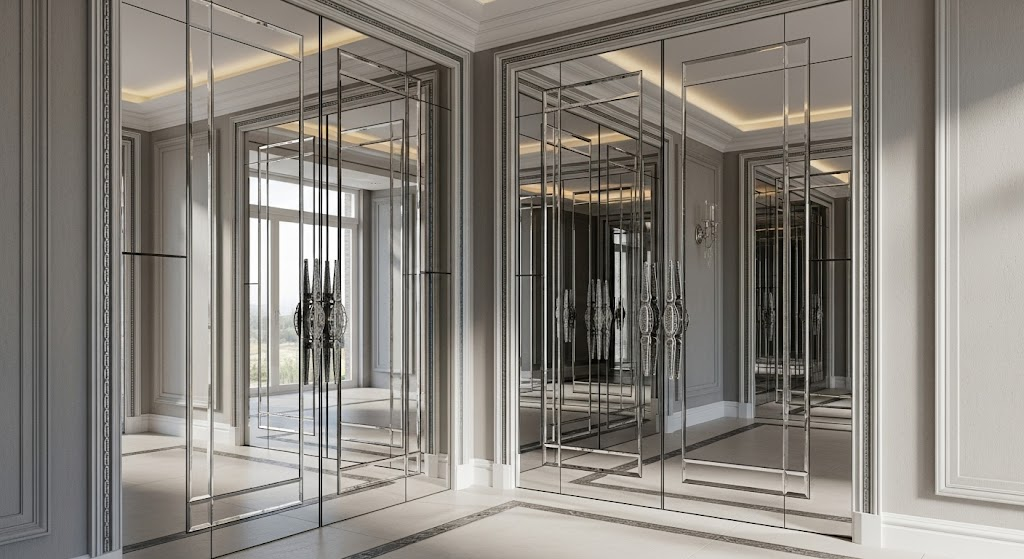
Doors with mirror surfaces that reflect light and create an illusion of space. Mirrored doors are closet favorites, but work in other applications too.
They make small rooms feel larger and provide convenient full-length mirrors. Available with various frame styles and mirror types.
- Why it works: Doubles as a mirror while making spaces feel larger
- Budget: $200-$500 per door
- Tip: Use safety backing to prevent injury if the mirror breaks
Accessories That Go Well With Interior Doors
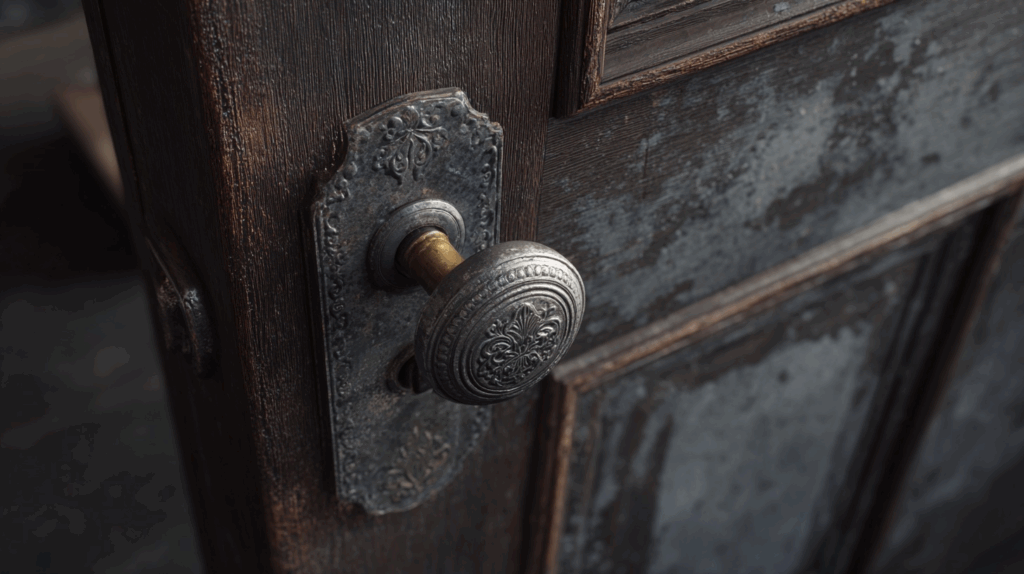
Doors are like outfits: they need the right accessories to shine. The hardware you choose for different types of interior doors can make a basic door look expensive or turn a beautiful door into a disappointment.
Essential Hardware:
- Handles and knobs: Your daily touchpoint with the door
- Hinges: Choose quality ones that won’t squeak or sag
- Locks and latches: Privacy and security where needed
- Door stops – Protect your walls from handle damage
Style Boosters:
- Decorative trim: Frame your doors with molding for a finished look
- Glass inserts: Add light and style to solid doors
- Door viewers: Peepholes for exterior-facing interior doors
- Weather stripping – Seal gaps for comfort and energy savings
Finishing Touches:
- Paint or stain: Color sets the mood for your entire space
- Door sweeps: Block drafts and reduce noise transfer
- Magnetic catches: Keep doors closed without traditional latches
- Soft-close hinges: Prevent slamming and extend door life
Match your hardware finish throughout the room for a cohesive look. Brushed nickel, oil-rubbed bronze, and matte black are popular choices that work with many styles.
Installation Considerations To Remember
Installing doors isn’t exactly brain surgery, but it’s not a weekend hobby project either. Getting it right the first time saves headaches and money in the long run.
- Measuring Matters: Measure the height, width, and depth of your opening three times for a perfect fit.
- Structural Requirements: Pocket doors require framing modifications during construction.
- Professional vs. DIY: Consider hiring professionals for new openings or structural modifications.
- Timeline Planning: Standard door installation takes 2-4 hours per door for experienced installers.
- Common Mistakes to Avoid: Forgetting to account for flooring thickness changes.
Conclusion
There you have it: everything you need to know about interior doors without a degree in home construction. The key is matching your door choice to your space, lifestyle, and budget.
Doors are long-term investments. Choose quality when it matters, save money where it doesn’t, and don’t be afraid to mix different types throughout your home.
Ready to give your home the door upgrade it deserves? Start with the spaces you use most and work your way through the house.
Your future self will thank you every time you walk through a door that fits your style and needs.

